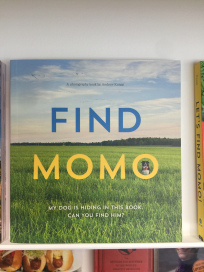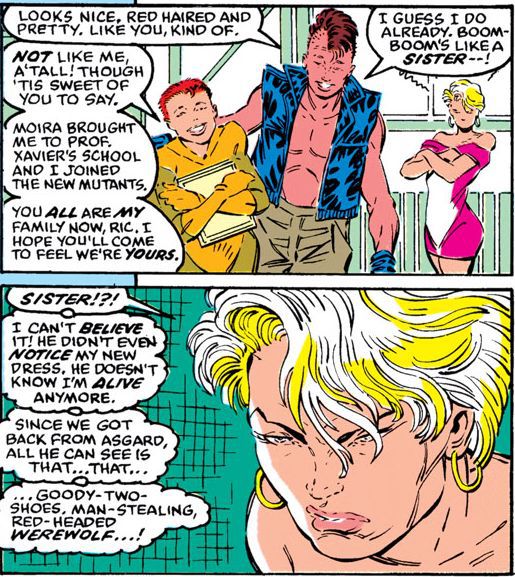
So you have this great idea for a story. Awesome. But…how do you know you’re starting in the right place?
In workshop and with my high school students, I often see fiction drafts that have “buried” the hook to the story and start with an unnecessary opening (or a less interesting one). Learning where to start your story is a challenge, but studying strong examples can help strengthen your craft.
This week, all of the MFA students in our Scholarships and Publications Methods class had to present a teaching demonstration in front of our fellow students. I decided to teach about story introductions, using Birds of America by Lorrie Moore—which I’m studying on my own to broaden my understanding of narrative structure—as a central text.
So, how do you begin a short story? (Or novel?) You have several options.
1. Begin with narrative summary and move into your scene.What is narrative summary? It refers to anytime in a story when we are given information about characters or plot that’s not shown through a) dialogue or b) scene.
An example of this comes from “Oh, Joseph, I’m So Tired” by Richard Yates (author of Revolutionary Road) — “When Franklin D. Roosevelt was President-elect there must have been sculptors all over America who wanted a chance to model his head from life, but my mother had connections. One of her closest friends and neighbors, in Greenwich Village courtyard where we lived, was an amiable man named Howard Whitman who had recently lost his job as a reporter on the New York Post.”
Without this necessary information, we as readers would be lost! We’d begin with a poor single mother who is sculpting the president’s bust and we’d think, “How did she get this gig?” Good question. Narrative summary answers it for us.
To decide if you should start this way, ask what background information we as readers absolutely need to know before settling into the central action of your story. Give it to us here, or give the background later if possible.
2. Make an observation about character, place, or an event/occasion before starting your scene.This is a certain kind of exposition (narrative summary) that’s less about plot points and usually more of a generalized and consistent observation.
Examples:
From “The Brother-in-Law” by Lydia Davis — “He was so quiet, so small and thin, that he was hardly there. The brother-in-law. Whose brother-in-law they did not know. Or where he came from, or if he would leave.”
From “Sketches for a Life of Wassily” by Lydia Davis — “Wassilly was a man of many parts, changeable, fickle, at times ambitious, at times stuporous, at times meditative, at times impatient.”
3. Similarly: make an observation about life itself to frame the thematic content.This is especially helpful when used to indirectly characterize people in your story.
Example from “Which Is More Than I Can Say About Some People” by Lorrie Moore (from Birds of America): “It was a fear greater than death, according to the magazines. Death was number four. After mutilation, three, and divorce, two. Number one, the real fear, the one death could not even approach, was public speaking.” (Moore 26)
This opening frames our reading of the rest of the story, which actually has nothing to do with public speaking, but has everything to do with irrational fears vs. a ruse of bravery.
4. Begin in medias res, in the middle of things.Sandra Scofield, author of my favorite fiction primer The Scene Book, writes: “It is possible to pull the reader into the heart of the story, beginning in medias res without getting lost, if your opening lines offer enough details of situation, setting, and potential conflict.” (143)
It’s easier said than done. But it can be a way to grip your reader’s attention from the beginning. A few examples from Lorrie Moore’s writing will illustrate how this can be done.
“People Like That Are The Only People Here: Canonical Babbling from Peed Onk”This story is about a mother who finds out her baby has cancer and must go to the pediatric oncology ward (peed onk). It plays with meta-narrative since the mother is a writer and is collecting “notes” about her experience. And it allows Moore to contrast the woman’s grief with her humor, a coping mechanism in this story.
Here’s how the text begins:
“A beginning, an end: there seems to be neither. The whole thing is like a cloud that just lands and everywhere inside it is full of rain. A start: the Mother finds a blood clot in the Baby’s diaper. What is the story? Who put this here? It is big and bright, with a broken khaki-colored vein in it. Over the weekend, the Baby had looked listless and spacey, clayey and grim. But today he looks fine—so what is this thing, startling against the white diaper, like a tiny mouse heart packed in snow?”
What makes this work?
Note the meta-narrative opening, anchoring us in a sense of timelessness. We also have several unanswerable, almost rhetorical questions that represent denial: “What is the story? Who put this here?” She uses strong and grotesque imagery to illustrate the emotional depth. Finally, notice the simile at the end: “like a tiny mouse heart packed in snow”.
This is an excellent example of how to start with the conflict, foregrounding the emotional trauma instead of ending with a climatic penultimate scene.
“Terrific Mother”Watch how this story uses long winding sentences to, well, distract the reader from the oncoming disaster. (Sorry for the spoiler.)
“…when she was at the Spearsons’ Labor Day picnic, and when Sally Spearson handed her the baby, Adrienne had burbled at it as she would a pet, had jostled the child gently, made clicking noises with her tongue, affectionately cooing, ‘Hello, pumpkinhead, hello, my little pumpkinhead,’ had reached to shoo a fly away and, amid the smells of old grass and the fatty crackle of the barbecue, lost her balance when the picnic bench, the dowels rotting in the joints, wobbled and began to topple her—the bench, the wobbly picnic bench, was toppling her! And when she fell backward, wrenching her spine—in the slowed quickness of this flipping world, she saw the clayey clouds, some frozen faces, one lone star like the nose of a jet—and when the baby’s head hit the stone retaining wall of the Spearsons’ newly terraced yard and bled fatally into the brain, Adrienne went home shortly thereafter…”
Note the repetition throughout this passage (“pumpkinhead” and “wobbly”). We also have another simile (“like the nose of a jet”) and the shocking directness of the conflict line, “the baby’s head…bled fatally into the brain” is told very matter-of-factly, in an almost callous way. We then directly leave this scene and follow Adrienne to her home, illustrating the fact that this story will follow her aftermath of the trauma.
“Real Estate”“It must be, Ruth thought, that she was going to die in the spring. She felt such inexplicable desolation then, such sludge in the heart, felt the season’s mockery, all that chartreuse humidity in her throat like a gag. How else to explain such a feeling? She could almost burst—could one burst with joylessness? What she was feeling was too strange, too contrary, too isolated for a mere emotion. It had to be a premonition—one of being finally whisked away after much boring flailing and flapping and the pained, purposeless work that constituted life. And in spring, no less: a premonition of death. A rehearsal. A secretary’s call to remind of the appointment.
Of course, it had always been in the spring that she discovered her husband’s affairs.”
Notice how we build up to the line that informs us of her husband’s affairs. Very clever, and it still situates us firmly in Ruth’s emotional state and conflict all the way through.
Do you see how Lorrie Moore foregrounds the conflict at the beginning of these stories? It’s not the usual story format, but it works well in these examples.
Your Turn! Try your hand at these prompts:Compose the beginning to a short story that immediately foregrounds conflict. Introduce the problem within the first few sentences and try to focus on one character’s relationship to that conflict. Choose your own conflict/trauma but perhaps consider: a car crash, a medical emergency, an animal attack, a break-in etc.
Start a scene in the middle of a family drama.
Consider a book you enjoy that starts in medias res. Examine how the writer structures the beginning. Using your own words/characters/setting, imitate the structure in your own writing.
————
Do you enjoy writing in medias res? What are your favorite examples?
-Ciera
Advertisements Share this:




